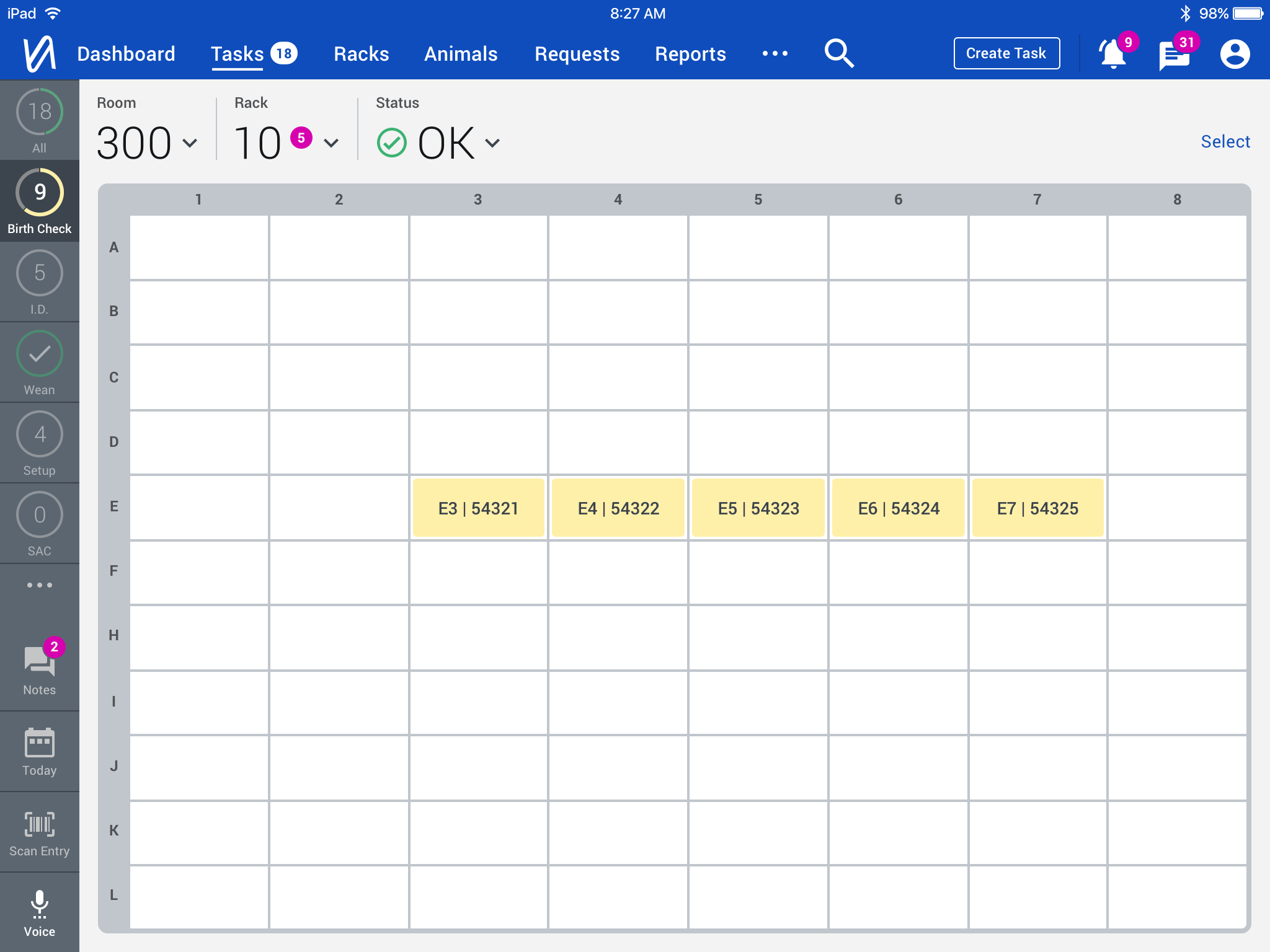Regeneron - VelociGene Discovery
Challenge
The biotechnology company brought us in to redefine VelociGene platform by replacing their current technology stack. We highlighted potential efficiency areas through user reasearch and co-working sessions to shape the new platform.
Key Tasks
• Participated in client workshops
• Led and conducted stakeholder and user interviews
• Map as-is service map and collaborate to align workflows with BA
• Define problem statements
• End-user co-creation sessions
• Creation of an Experience Brief which succinctly packaged up our discovery findings
• End deliverable: Create iPad app proof of concept
• Created discussion guide and conducted usability testing for every sprint plan
Impact
We produced an iPad POC supported and validated our hypothesis which we were able to take back to our business stakeholders in a round-table discussion. Our synergy with product owner ultimately led to scoping Phase 2 to build bringing in $14 million.
Regeneron continues to move closer to achieving their goal
Mobile, voice activated app – will replace paper and help minimize contaminations
Workflow improvements – research cycles helped to identify how to streamline processes and what information was needed where and when
Delivered the scope of the discovery phase on time
Built a solid foundation for Phase 2
Gained the trust of the client
Introduced an approach to user-centered design thinking that our stakeholders started circulating through other departments in the company
WHAT WE DID - SUMMARY
Focus on the Users - Route to user centricity:
Create an environment that encourages discussion – the project area displayed designs, personas, user journeys, and other assets that people could discuss and align around
Co-creation and usability sessions – twice weekly sessions with users and stakeholders; this gathered design feedback and requirements, and kept users involved at every stage of the process
Realistic usability space – we built a mock lab that mirrored the space where the users worked. Conducting research in this space led to deeper insights that would have otherwise been missed
Create Experience principles – this helped guide design and ensure that users were kept in mind at all stages
As-Is Service Map
To identify opportunity areas we had to document the current state at a 50,000 ft level. I owned the current state service mapping and collaborated with our main product owner and cross-referenced with BA’s 30,000 ft workflows.
PERSONAS
For each persona we chose one problem statement to sum their underlying issue.
Animal Research Associates
In the vivarium, teams of ARA’s have a heavy reliance on paper and memory for data entry. There’s no task tracking system, therefore no audit trail. They have to manually track plan details and cage status, losing valuable time that can be used for higher priority tasks.
Scientists and Research Associates
In the labs, teams of scientists & RA’s depend heavily on being able to plan and execute their experiments appropriately. They require the means to proactively track multiple project status’ as well as be kept up-to-date of any and all updates that could put their experiments at risk. Due to the numerous methods used to communicate with animal production, information can either get lost or end up not being efficiently communicated.
Colony Managers
In the vivarium, colony managers depend heavily on optimizing space management. The database doesn’t update in real-time, creating inaccuracies in space availability and inventories. Therefore users find the data in the system to be not fully reliable.
DISCOVERY PHASE - PROCESS REEL
Using all of the assets from our research Discovery phase, we created a quick 30 second process reel. This was part of the roadshow for our stakeholders to convey the power of design thinking and how it is very similar to their core values of Regeneron.
Here’s a link to our experience brief; this contains all the deliverables from Discovery Phase.
Co-Creation SessionS
Throughout the design stage of the project, we regularly met with several end-users to help shape what the iPad app proof of concept would become. By gathering insights from co-creation sessions with end-users and stakeholders, we took into consideration their point of views and did an initial validation.
Design POC
We were able to take the iPad application and conduct usability testing and round-table discussions.














Usability Testing
We created a dedicated usability lab onsite allowing us to conduct weekly test sessions easily. It helped us frame the needs of users, grow confidence of ARA’s to test and push our initial co-validated designs.
We tested with the full gear and multiple layers of latex gloves. By setting up multiple camera angles, other colleagues in the war room were able to notice subtle behaviors and brainstorm iterative solutions to enhance usability.
Usability Findings for iPad POC
• Reduce number of steps in data entry within breeding mice process
• Understanding the limitation of number of gloves used in Vivariums - able to accommodate to 4 gloves on iPad Pro
• Symbols must be understood collectively such as minus could be interpreted as take away from sum or deduce the input sum
• New design was intuitive that it didn’t require little or no training for Animal Research Associates to understand it
HOW TO USE INVISION - TRAINING VIDEO
We created a ‘How to use Invision video. This was very important as it allowed all users to directly put feedback into our designs in their own time.







